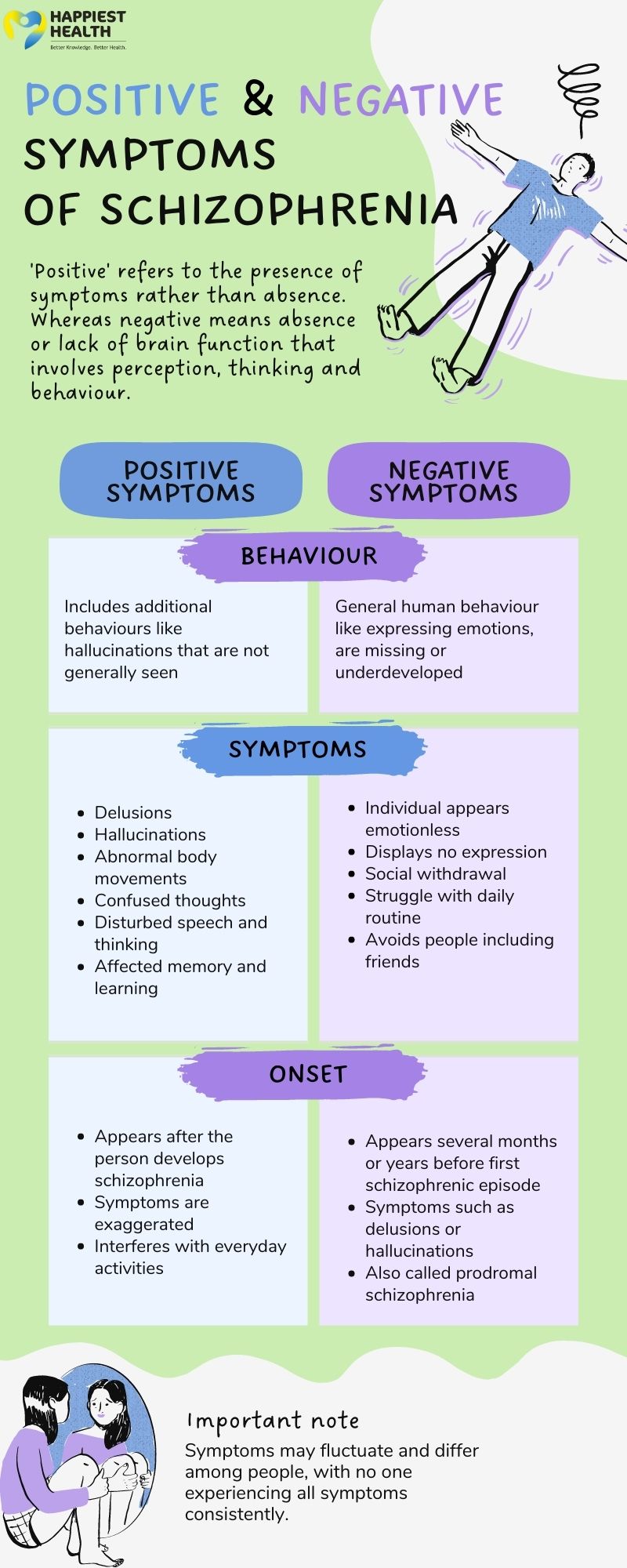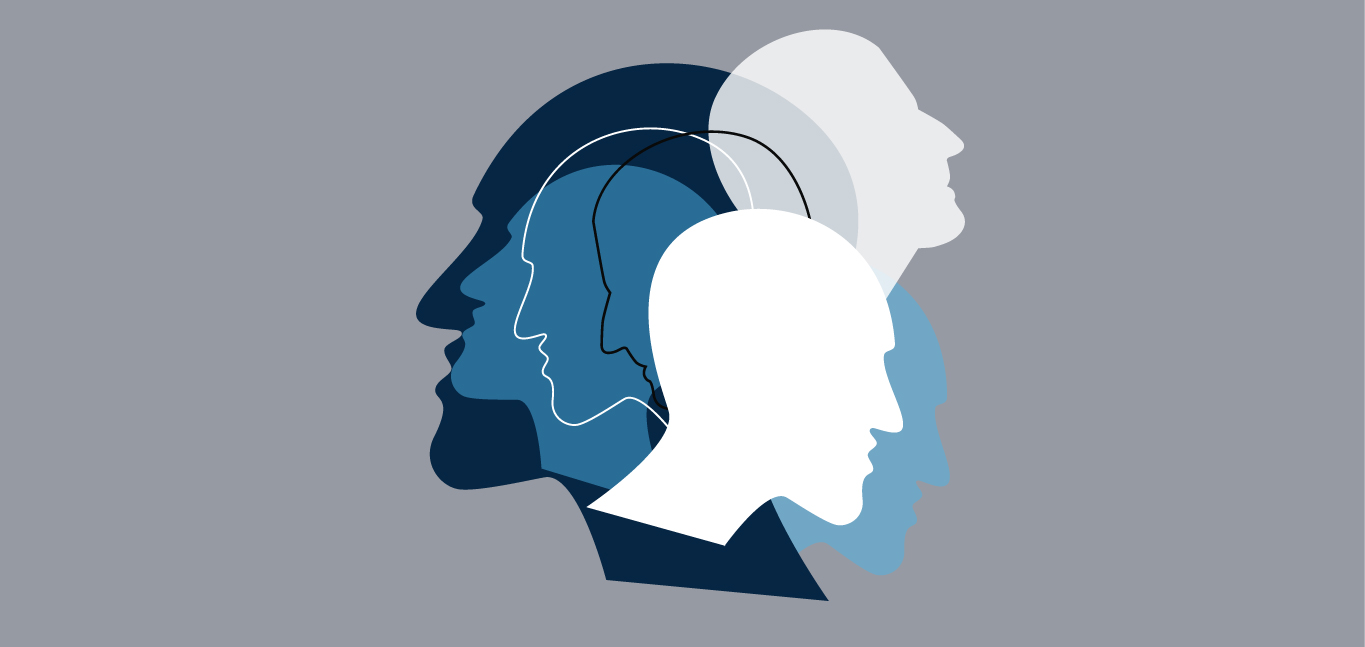Schizophrenia affects a person’s thoughts, emotions, and actions. It has both positive and negative symptoms, which fluctuate and rarely appear all at once. However, both of these symptoms are associated with changes in the structure and functioning of a number of key brain systems.
Read more – Affected brain regions in schizophrenia
Positive symptoms of schizophrenia often resemble those found in other conditions, making them somewhat challenging to distinguish. On the other hand, negative symptoms can be even more elusive to detect because of their silent nature. “Positive symptoms are easily visible because they cause significant disruption. On the other hand, negative symptoms are kind of silent, but they keep causing dysfunction,” says Dr Sneha V, consultant psychiatrist based in Bengaluru.
This infographic provides insight into the distinguishing features of both positive and negative symptoms, aiding in the early recognition of schizophrenia.
















